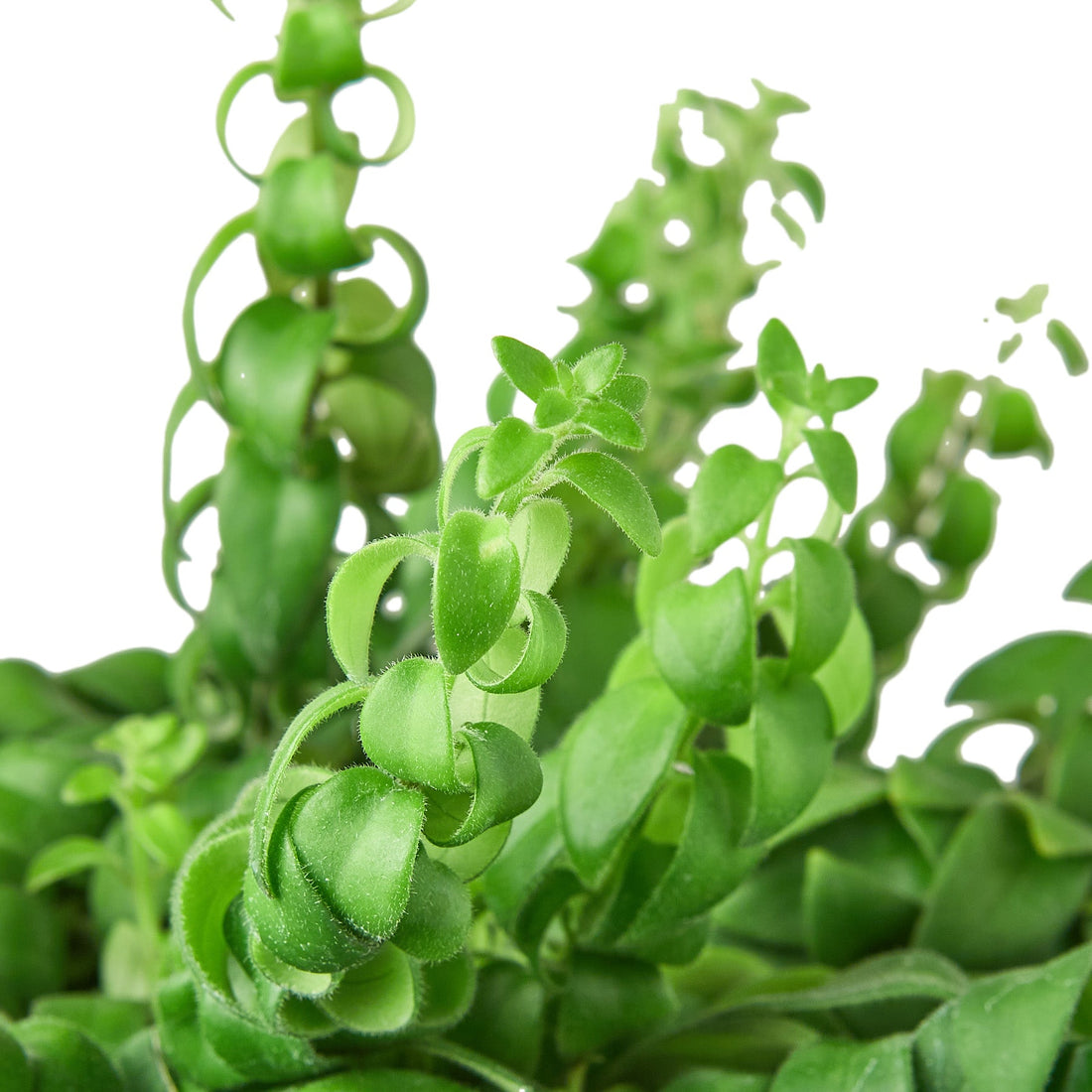
Comprehensive Curly Lipstick Plant Care Guide: Tips for Thriving Indoor Growth
Compartir
Introduction
Envision enhancing your home with the vibrant beauty of the Curly Lipstick Plant. Aeschynanthus radicans, admired for its striking red tubular flowers and lush, curly foliage, is a tropical plant that infuses energy into any indoor space. Hailing from the rainforests of Southeast Asia, this plant flourishes in warm, humid environments, making it a delightful and rewarding addition to your indoor plant collection. Let's explore the essentials of growing this captivating plant and ensuring it thrives under your care.
Curly Lipstick Plant Houseplant Basic Care
Taking care of a Curly Lipstick Plant is simple when you follow the right steps. Below are the key care tips, including lighting, watering, humidity, temperature, and fertilization, to help your plant thrive.
In-Depth Care Guidelines
Lighting:
Curly Lipstick Plants flourish in bright, indirect light. Position your plant near a window that provides filtered sunlight throughout the day. Keep it out of direct sunlight, which can damage the leaves and flowers.
Watering:
Water the plant when the top inch of soil is dry. Curly Lipstick Plants prefer soil that is consistently moist but not waterlogged. Ensure the pot has adequate drainage to prevent root rot.
Humidity:
These plants thrive in humid conditions, similar to their natural rainforest habitat. Increase humidity by misting the leaves regularly or using a humidifier, especially in dry indoor environments.
Temperature:
Ideal temperatures for this plant range between 65°F and 80°F (18°C to 27°C). Avoid exposing the plant to sudden temperature changes or drafts, which can cause stress.
Fertilization:
Feed your plant with a balanced, water-soluble fertilizer once a month during the growing season (spring and summer). Cut back on feeding during the fall and winter months when growth slows.
Troubleshooting Common Issues
Yellowing Leaves:
This usually indicates overwatering or inadequate drainage. Adjust your watering schedule and ensure the pot has good drainage.
Flowering Issues:
Insufficient light or improper watering can result in a lack of blooms. Ensure your plant receives enough bright, indirect light and maintain a consistent watering routine.
Pests:
Look out for pests such as aphids and spider mites. Inspect your plant regularly and treat it with insecticidal soap or neem oil if you notice any pests.
Additional Pro Tips
- Pruning encourages fuller growth and more blooms. Trim back long stems and remove spent flowers to promote new growth.
- Use a well-draining, peat-based potting mix to replicate the plant's natural conditions.
- Repot your Curly Lipstick Plant every couple of years to refresh the soil and allow for growth.
Pet Safety
The Curly Lipstick Plant is non-toxic to pets, making it a pet-friendly choice for your home. However, it's still a good idea to keep plants out of reach of curious pets to avoid any potential minor digestive issues.
Precautions
Choose a spot for your Curly Lipstick Plant that avoids stress from direct sunlight or temperature fluctuations, ensuring it stays healthy and vibrant.
Frequently Asked Questions (FAQs)
How often should I water my Curly Lipstick Plant?
Water when the top inch of soil is dry, usually about once a week. Adjust based on your home's temperature, light, and humidity levels.
Can Curly Lipstick Plants grow in low light?
While they prefer bright, indirect light, Curly Lipstick Plants can adapt to lower light conditions. However, flowering may be reduced.
What should I do if my Curly Lipstick Plant's leaves turn yellow?
Yellow leaves typically indicate overwatering or poor drainage. Adjust your watering habits and ensure good drainage.
Is it difficult to get a Curly Lipstick Plant to flower indoors?
With the right light, watering, and feeding, Curly Lipstick Plants can bloom indoors. Ensure they receive ample bright, indirect light for optimal flowering.
How can I boost humidity for my Curly Lipstick Plant?
Increase humidity by misting the leaves, using a humidifier, or placing the plant on a pebble tray with water.
